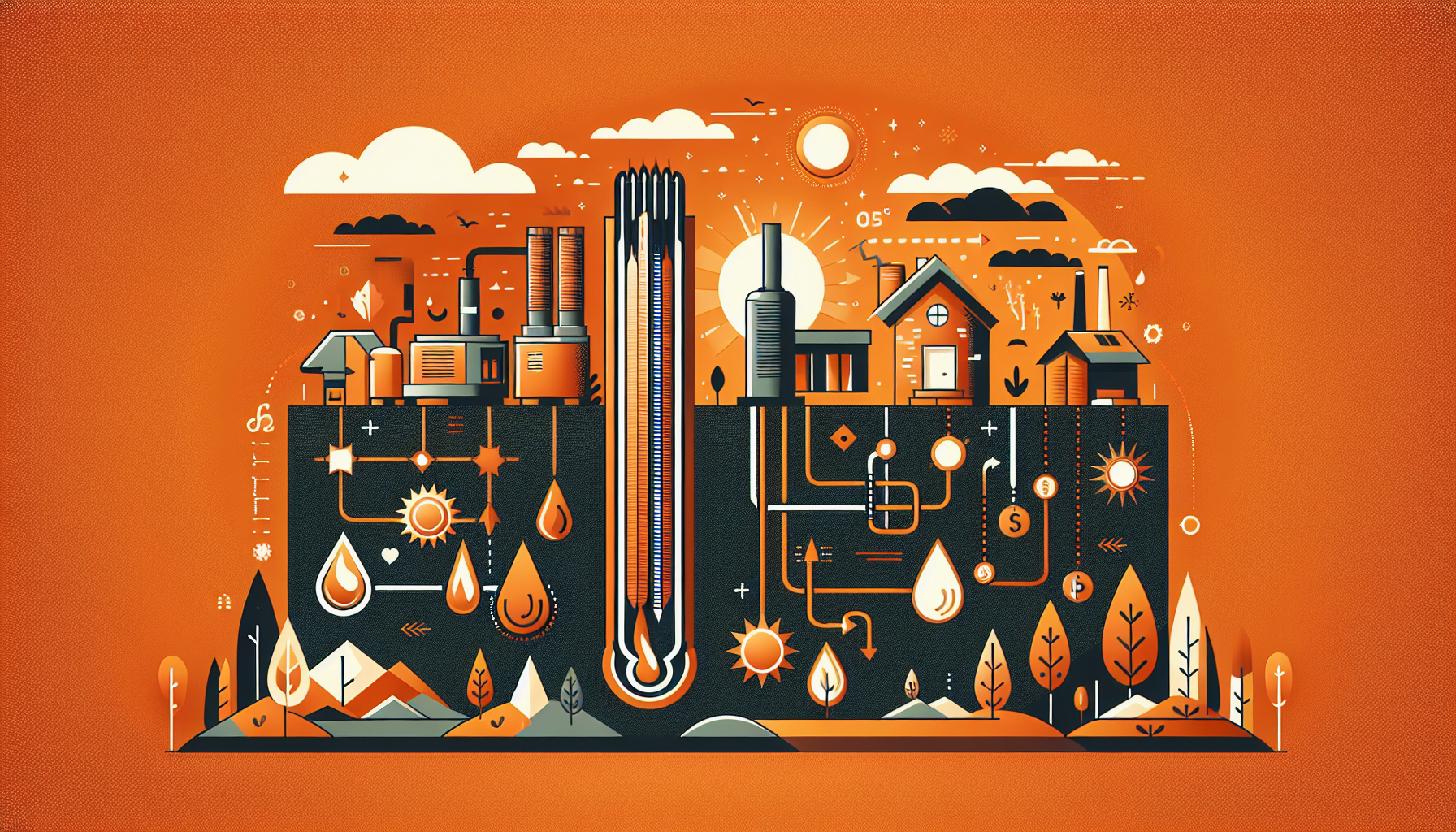Geothermal heat pumps offer a sustainable solution for home heating and cooling. Yet, as you ponder the shift to this eco-friendly technology, you might find yourself wading through a swamp of confusion and mixed reviews.
Ever felt the sting of a high utility bill or the guilt of a carbon-heavy footprint? That’s where geothermal steps in, promising relief and efficiency. In my journey through the renewable energy landscape, I’ve seen firsthand the transformative power of these systems.
Let’s navigate the terrain of geothermal heat pumps together, uncovering the benefits and drawbacks that matter most to you.

Geothermal Heat Pumps: Pros and Cons

Harnessing the Earth’s Consistent Temperature for Your Home
Imagine tapping into the earth’s stable underground temperature to keep your home cozy in winter and cool in summer. Geothermal heat pumps do just that. They’re a marvel of efficiency, using the ground’s natural heat. This isn’t just about comfort; it’s about using what’s already there, beneath our feet, to reduce our reliance on fossil fuels.
Year-Round Comfort with a Single System
You’re used to the idea of needing separate systems for heating and cooling. But geothermal heat pumps challenge that norm. They provide both heating and cooling, leveraging the ground’s temperature to regulate your home’s climate. It’s a seamless transition from season to season, all with one piece of equipment.
Cutting Costs and Carbon Footprints
Let’s talk savings. Geothermal systems can slash your energy bills significantly. They’re three to four times more efficient than traditional systems. And your carbon footprint? It shrinks. By using less energy, you’re contributing to a cleaner environment. It’s a win-win for your wallet and the planet.
The Price of Going Green: Initial Investment
Now, the upfront cost is steep. Installing a geothermal system involves drilling and retrofitting your home. It’s a significant investment. But think long-term. Over time, the energy savings can offset this initial expense. It’s about looking beyond the sticker shock to the potential savings down the line.
Not a One-Size-Fits-All Solution
Geothermal isn’t for every home. The suitability depends on your property’s characteristics. You need enough land for the system’s underground loop. And the soil? It has to be right for the heat exchange process. It’s important to assess your home’s compatibility before diving in.
In the context of HeatFromBelow.com, you, the eco-conscious homeowner, are likely weighing the benefits of a geothermal system for your pool or home. It’s a sustainable choice, aligning with your values. But it requires careful consideration of the pros and cons, ensuring it’s the right fit for your property and your commitment to green living.
Geothermal Heat Pumps: Are They Right for You?

Understanding the Basics: What is a Geothermal Heat Pump?
You’ve probably heard about geothermal heat pumps (GHPs) and their reputation for being eco-friendly. Simply put, they use the earth’s constant underground temperature to heat and cool your home. It’s like tapping into nature’s own thermostat. But before you jump on the bandwagon, let’s dig a little deeper.
Assessing Your Home’s Compatibility: The Ideal Candidate for GHPs
Now, imagine your home. Is it well-insulated? Do you have a decent amount of land around it? These are important boxes to tick for GHPs to work efficiently. If you’re living in a moderate climate and your home is snug as a bug with insulation, you’re on the right track. Geothermal systems thrive in these conditions, leveraging the mild outdoor temperatures to your advantage.
The Nitty-Gritty: Conducting a Site Survey
Before you get too excited, you’ll need a professional to conduct a site survey. They’ll assess your land’s geology, hydrology, and space availability. Think of it as a tailor measuring you for a bespoke suit. This step ensures that a GHP system can be properly designed to fit your home’s unique needs.
Cost vs. Savings: Crunching the Numbers with Multiple Quotes
Let’s talk money. You’re probably wondering about the cost-effectiveness of GHPs. Here’s the deal: you need to get quotes from several contractors. This isn’t just about finding the best price; it’s about understanding the long-term savings. GHPs may have a higher upfront cost, but the reduced monthly energy bills can be a game-changer.
The Pros and Cons: Making an Informed Decision
You’re looking for a sustainable solution, right? GHPs are a stellar choice for reducing your carbon footprint. But they’re not a one-size-fits-all solution. You’ve got to weigh the initial investment against the long-term benefits. And The success of a GHP system hinges on your specific situation-there’s no room for guesswork here.
In the context of HeatFromBelow.com, if you’re eyeing geothermal solutions for your pool or home heating needs, understanding these factors is necessary. Whether you’re a DIY enthusiast or seeking professional installation, grasping the pros and cons of GHPs is the first step towards a more sustainable living.






